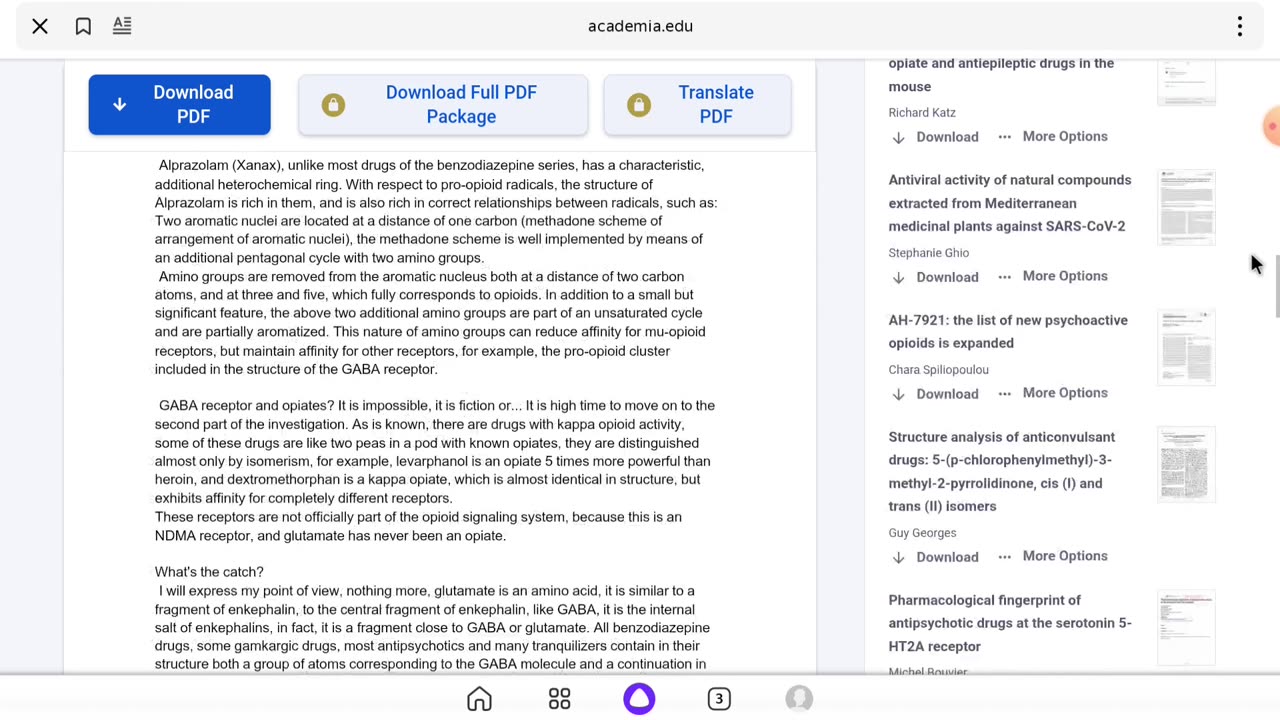Premium Only Content

Opioid radicals in pharmacological substances. Opioid epidemic. Drug Design.
Opioid radicals in the structure of antipsychotics, anxiolytics, anticonvulsants and some others. What bigpharma is hiding.
Drugs And Addiction,
Molecular Biology,
Antipsychotic drugs,
Drug Design,
Benzodiazepines,
Anxiolytics
Let's ask a few important questions that have no answers yet, questions that no one has dared to ask, questions, the answers to which could greatly undermine the reputation of pharmaceutical giants, change the rules for registering pharmaceutical drugs, revise drug access lists and much more. Neuroleptics, anxiolytics, some anticonvulsants and tranquilizers have radicals in their structure that are characteristic of direct opioid mimetics. These are radicals characteristic of meth and leukenkephalins-aromatic nuclei, an amino group at a distance of 2, 3, 5 carbon bonds from the aromatic nucleus, cyclic saturated or heterochemical inclusions, fragments of leucine or methionine (or their pharmacological analogues). All these radicals, when correctly placed, are capable of causing a powerful affinity for opioid receptors. Some antipsychotic.. drugs have a slightly less pronounced similarity to the opioid structure, while others are closer to enkephalins and opiates in structure. The drugs that are closest, in my opinion, in structure to opiates are xanax, pregabalin, coaxil and xylazine. Let's analyze the chemical structure of these drugs and determine, if possible, what differences they have from similar analogs, but with a less dubious history.
-
 38:07
38:07
Michael Franzese
4 hours agoLeaving Organized Crime and Uncovering Mob in Politics: Tudor Dixon and Michael Franzese
24.8K9 -
 2:42:54
2:42:54
Jewels Jones Live ®
1 day agoAMERICA IS BACK | A Political Rendezvous - Ep. 111
24.5K33 -
 LIVE
LIVE
Due Dissidence
1 day agoLIVE: Workers Strike Back Conference ft. Chris Hedges, Jill Stein, Kshama Sawant, and More!
1,532 watching -
 8:36:37
8:36:37
Right Side Broadcasting Network
5 days agoLIVE REPLAY: CPAC 2025 Day Three with President Donald J. Trump - 2/22/25
342K89 -
 1:05:34
1:05:34
The Big Mig™
12 hours agoConfirmed Kash Patel New FBI Director, Bring On The Pain |EP483
54.5K18 -
 53:59
53:59
Tactical Advisor
7 hours agoThe Vault Room Podcast 009 | Everyone Getting $5000?!
50.6K10 -
 2:04:44
2:04:44
TheAlecLaceShow
18 hours agoLive at CPAC | Interviews with Dean Cain, Rep. Comer and more! | The Alec Lace Show
62.3K3 -
 LIVE
LIVE
Major League Fishing
3 days agoLIVE Tackle Warehouse Invitationals, Stop 1, Day 2
340 watching -
 3:12:37
3:12:37
I_Came_With_Fire_Podcast
15 hours agoNOC Spy: CIA uses SATANIC RITUAL ABUSE to make SLEEPER Cells
69.1K10 -
 28:42
28:42
CatfishedOnline
1 day ago $3.17 earnedWoman Insists Morgan Wallen Relationship Isn't a Romance Scam!
53.3K2